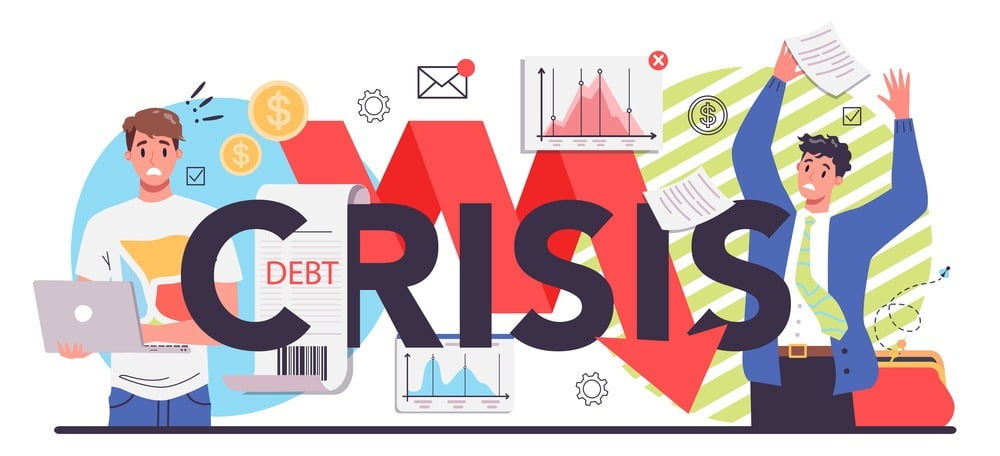Small and medium-sized businesses face numerous challenges when it comes to managing their assets, from limited resources to a lack of specialized expertise. Asset optimization can be a powerful tool to help small businesses overcome these challenges and improve their operations. Small businesses can reduce costs, increase revenue, and improve their overall performance by maximizing the value and efficiency of their assets. This article will explore how asset optimization can benefit small businesses and provide practical tips and strategies for implementing an effective asset optimization program. Whether you own a small business or are the manager of one, this article will help you understand the importance of asset optimization and how to leverage it for your business success.
Related article: How Does Barcode Work in the Present Day?
What is asset optimization?
Asset optimization refers to maximizing the performance and efficiency of assets, such as equipment, machinery, or resources, to achieve the highest possible return on investment (ROI) and minimize costs. This can involve analyzing the utilization and maintenance of assets to identify areas where improvements can be made.
Asset optimization typically involves a combination of strategies, such as preventative maintenance, predictive maintenance, and condition-based maintenance, to ensure that assets are operating at their optimal level. It also involves analyzing data on asset performance, such as energy consumption, uptime, and downtime to identify trends and patterns that can inform decisions about when to repair or replace assets.
Effective asset optimization requires a comprehensive understanding of the assets being used, as well as a thorough analysis of the processes and workflows associated with them. Organizations can improve their bottom line, reduce maintenance costs, and enhance their overall operational efficiency by optimizing asset performance.
How asset optimization helps small businesses?
Asset optimization is maximizing the efficiency and productivity of the assets a business owns or uses. This includes both physical assets like equipment and facilities, as well as intangible assets like intellectual property and human capital. Asset optimization can be a powerful tool for small businesses, as it can help them to increase their profitability, reduce their costs, and compete more effectively in their markets. Here are some specific ways that asset optimization can help small businesses:
Improved resource utilization
By optimizing their assets, small businesses can make better use of their resources, including labor, materials, and equipment. Furthermore, it can help reduce waste, improve efficiency, and increase productivity.
Cost savings
Small businesses can reduce operating costs by identifying areas where assets are underutilized or inefficient. It can help them improve their profitability and reinvest those savings into other business areas. Furthermore, small businesses can reduce their overhead and improve their bottom line by minimizing the number of resources needed to produce goods or services.

Better decision-making
By clearly understanding their assets and how they are being used, small businesses can make data-driven decisions about allocating resources and prioritizing investments. It can help them stay competitive and adapt to changing market conditions.
Improved customer service
Small businesses can improve the quality and speed of their products or services by optimizing their assets, leading to higher customer satisfaction, customer loyalty, and repeat business.
Increased agility
Small businesses can become more agile and responsive to market changes by optimizing their assets. This can help them to stay ahead of competitors and seize new markets or opportunities as they arise.
Increased flexibility
By optimizing their assets, small businesses can become more agile and adaptable to changes in the market. It can help them to respond more quickly to new opportunities and challenges and stay ahead of their competition.
Improved risk management

Asset optimization can also help small businesses to manage risk more effectively. Small businesses can minimize risk exposure and protect their assets by identifying and addressing potential risks, such as equipment failure or supply chain disruptions.
Improved efficiency
Asset optimization can help small businesses to identify and eliminate inefficiencies in their operations. Small businesses can become more productive and profitable by streamlining processes, reducing waste, and maximizing the use of resources.
Overall, asset optimization can be a powerful solution for small businesses looking to improve efficiency, reduce costs, and stay competitive in their markets. By taking a strategic approach to asset management, small businesses can unlock new opportunities for growth and success.
The importance of asset optimization for small businesses
Small businesses can benefit significantly from effective asset management because they often have limited resources and need to make the most out of what they have. Here are some reasons why asset optimization is essential for small businesses:
Maximize the value of assets
Small businesses typically have limited capital, so it is essential to make the most of the assets they have. By managing assets effectively, companies can reduce waste and increase efficiency, leading to cost savings and increased profits.
Improved decision-making
Effective asset management provides small businesses with accurate and up-to-date information about their assets, which helps them make smart decisions about how to allocate resources and plan for future growth.
Enhanced productivity
By managing assets effectively, small businesses can optimize the use of their resources, which can lead to increased productivity. It can result in faster turnaround times, improved customer satisfaction, and increased revenue.

Regulatory compliance
Small businesses need to comply with various laws and regulations related to their assets. Effective asset optimization can help small enterprises meet the changing compliance requirements and avoid costly fines and penalties.
Risk management
Small businesses face many risks, such as theft, damage, or obsolescence of assets. By managing assets effectively, companies can reduce these risks and protect themselves from potential losses.
Asset management is crucial for small businesses as it can help them maximize their resources, improve decision-making, enhance productivity, ensure regulatory compliance, and manage risks effectively. By investing in practical asset optimization tools, small businesses can improve their bottom line and achieve long-term success.
Challenges for small businesses while managing assets
Small businesses face several challenges when it comes to managing their assets effectively. Here are some of the most common challenges that small businesses face in managing their assets:
Limited resources
Small businesses often have limited financial and human resources, making it difficult to invest in sophisticated asset management systems or hire dedicated asset management staff.
Lack of expertise
Small business owners and employees may not have the required skills, knowledge, or expertise to manage assets effectively. This can lead to suboptimal asset utilization, maintenance, and replacement decisions.

Multiple responsibilities
Small business owners often have to wear many hats and manage multiple aspects of the business simultaneously. Asset management can take a backseat to other pressing tasks.
Poor data management
Small businesses may lack the technology or systems needed to track and analyze asset data effectively. This can result in poor decision-making and missed opportunities to optimize asset performance.
Maintenance and repair costs
Small businesses may struggle to balance the costs of maintaining and repairing assets with the need to invest in new assets. This can result in inefficient and costly asset management practices.
Risk management
Small businesses may struggle to identify and manage risks associated with their assets, such as theft, damage, or obsolescence. This can result in unexpected costs and disruptions to business operations.
To overcome these challenges, small businesses can implement effective asset management strategies and invest in technology and systems that can help them track, analyze, and optimize asset performance. Small businesses can also seek guidance from asset management experts and industry associations to develop effective asset optimization practices.
Best practices for effective asset optimization
Effective asset management involves the systematic approach to acquiring, operating, maintaining, upgrading, and disposing of assets to maximize their value and minimize costs and risks. Here are some best practices for effective asset management:
Develop a comprehensive asset inventory.
Start by identifying and cataloging all the assets that you own, including their location, condition, and useful life. This will provide a baseline for planning and decision-making.
Set clear goals and objectives.
Define your goals and objectives for asset management, including service levels, performance metrics, and budgetary constraints. This will help you prioritize investments and measure success.
Develop a maintenance plan.
Develop a preventive maintenance plan to ensure that your assets are regularly serviced and maintained to extend their useful life and minimize downtime.
Conduct regular inspections.
Conduct regular inspections of your assets to identify potential problems early and prevent equipment failure. Use the data from inspections to prioritize maintenance and repairs.
Use data analytics

Use data analytics to analyze asset performance, identify trends, and make informed decisions about maintenance, upgrades, and replacements.
Implement asset tracking
Implement an asset tracking system to monitor the location and movement of assets, record maintenance activities, and ensure compliance with regulations.
Invest in training and development.
Invest in training and development for your staff to ensure they have the necessary skills and knowledge to manage your assets effectively.
Consider asset disposal
Develop a plan for the disposal of assets that are no longer useful or cost-effective. Consider factors such as environmental impact, salvage value, and regulatory requirements.
Collaborate with stakeholders
Collaborate with stakeholders, including suppliers, customers, and regulators, to identify opportunities for improvement and optimize asset management.
By following these best practices, you can ensure that your assets are managed effectively, efficiently, and in a way that supports your organization’s goals and objectives.
Related blog: What is the difference between availability and reliability?
Final Note
Asset optimization is a crucial strategy for small businesses to reduce costs, increase efficiency, and maximize profits. By focusing on critical assets such as equipment, inventory, and personnel, companies can identify areas for improvement and implement targeted solutions to streamline operations. The benefits of asset optimization extend beyond financial gains and can also lead to improved customer satisfaction and employee morale.
While implementing asset optimization may require an upfront investment, the long-term benefits are well worth it. Small businesses that prioritize asset optimization will be better equipped to navigate economic challenges and achieve sustainable growth in the future. Therefore, small businesses need to prioritize asset optimization and invest in the necessary resources and technologies to achieve optimal results.























